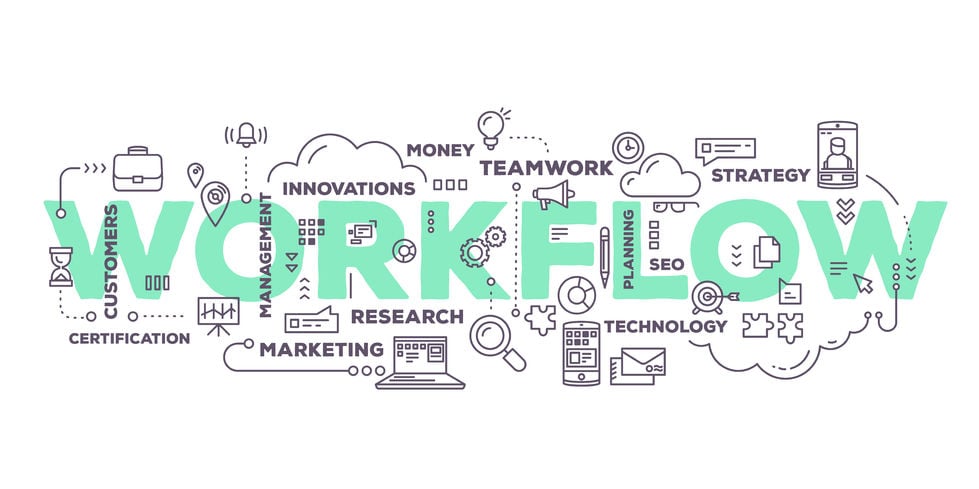
19 Apr A Primer to AI, Machine Learning and New Workflow Technologies
Many of us are already using forms of artificial intelligence – machines that learn and act as sentient beings that can sense, comprehend and act as humans do – whether we know it or not. First, there was Siri, Apple’s virtual assistant, and Samsung announced just last month its first AI-based assistant Bixby, both of which are NLP (Natural Language Processing)-based forms of AI.
NLP forms of AI and many others utilize machine learning to understand the many subtleties of language and help machines respond to humans in a way they’ll understand. Machine learning uses algorithms to examine data, learn from it and apply it to an application. In essence, after each exposure to an interaction, the machine trains itself by reviewing data and applying algorithms to perform tasks better the next time an interaction occurs.
AI or machine learning aren’t possible without access to computing power and the growth of big data. Without massive amounts of data that continue to grow, machines wouldn’t be able to self teach or improve upon their performance of tasks. Global consultant firm Accenture reported that Barry Smyth, professor of computer science at University College Dublin, said “Data is to AI what food is to humans.”
Not only is AI becoming more pervasive in our everyday life whether it’s a virtual assistant or a physical robot in a manufacturing plant, its predicted by some to be one of the few areas of economic growth in the coming years, alongside blockchain – which some believe to be the driver of the next digital revolution. In Accenture’s report, “Why Artificial Intelligence is the Future of Growth,” the company said it “analyzed 12 developed economies and found that AI has the potential to double their annual economic growth rates by 2035.”
What’s also needed to drive AI forward are the implementations of workflow technologies. Workflows support the execution and automation of tasks by linking together people, systems or processes. In other words, machine learning relies on workflows to help an AI-based application finish a task. Workflow technologies are also highly valuable on their own and are used outside of AI to help people and companies act more efficiently.
Workflow technologies or software helps to automate processes that otherwise would require a human to move forward. For example, imagine that in order to bill a client, someone in order processing may have to command the billing software to generate an invoice for the accounting department to send to the customer. Let’s assume that person went on vacation for two weeks and a number of those commands needed to be executed. Or, that person may be behind due to seasonal heavy volume. Instead, a workflow automates that process so that the company eliminates the need for a person to be present to execute it or in this case, for the individual to return from vacation to complete it.
Operations teams and those executing BPM (Business Process Management) tasks use workflows to improve productivity and the time it takes to execute business-critical activities other operational functions, like billing. No owner or CEO or wants to hear that accounting was unable to send out invoices for two weeks while anyone was on leave. Literally, in this case, time is money.
You may not know it, but with the right workflow software and a BPM specialist, you could improve upon:
- The time from order in house to shipped out the door
- Customer service satisfaction rates
- The number of calls your sales team makes in a day
- How quickly website leads are funneled to the right salesperson
- Cross departmental communication
Companies, whether an SMB or enterprise, that can apply workflow automation to their business model are poised to surge ahead of those that can’t. And enterprises with computing power, big data and teams to monitor and improve upon BPM just might find machine learning or AI to be a strategic goal in the coming years. Although some debate that AI will rob many humans of their jobs, companies that employ such technologies will require humans to plan, design and execute them for maximum impact at each company.



